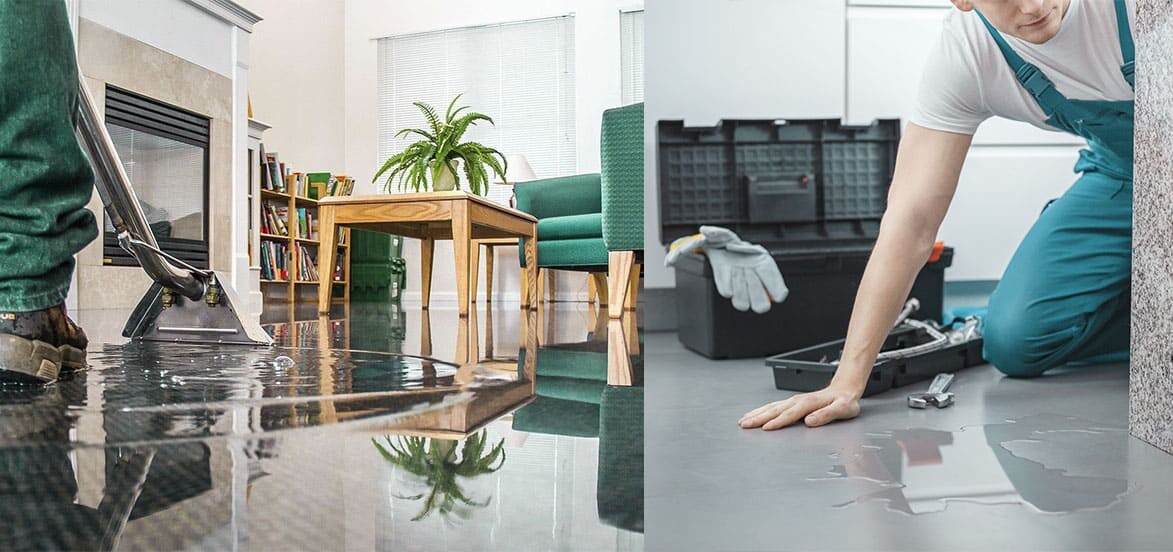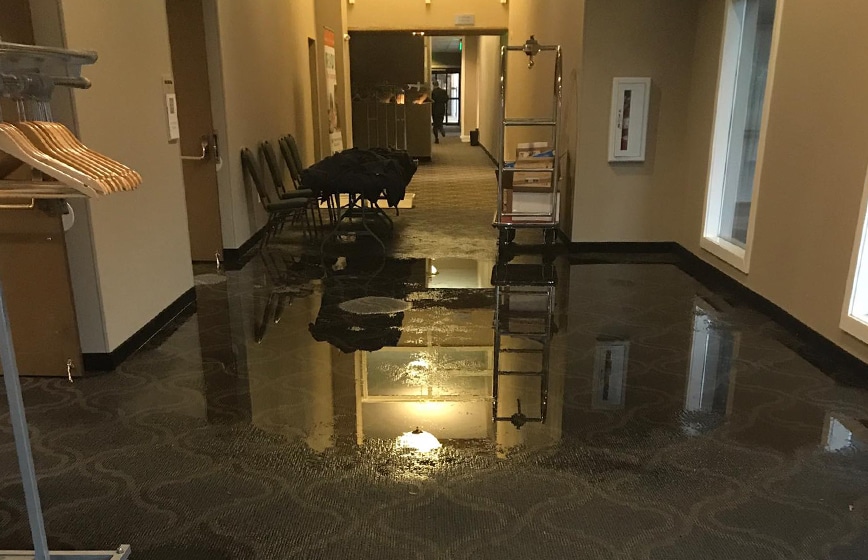Why professional Flood Cleanup Services matter after major flooding
Water Damage Restoration 101: Understanding the Process and Cost
Water damage can strike all of a sudden, leaving house owners in a state of confusion. Understanding the restoration procedure is necessary for efficient healing. From reviewing the damage to selecting the appropriate provider, each action impacts the overall result and cost. Variables such as the kind of water damage and necessity also play a significant role. What are the certain techniques made use of in remediation, and how can one prepare for prospective costs?
Types of Water Damage

Initial Assessment and Examination

Water Removal Methods
Adhering to the initial analysis, reliable water extraction methods are utilized to reduce damage and stop more problems. These methods include making use of specialized devices such as submersible pumps and industrial-grade vacuum cleaners - Water Damage Restoration. The selection of technique depends upon the volume of water present and the kind of products influenced. For standing water, completely submersible pumps are usually utilized for fast removal, while vacuum cleaners are optimal for removing water from rugs and upholstery. Furthermore, progressed methods like water removal mats might be employed for hard-to-reach areas - Water Damage Restoration. The objective is to get rid of as much water as feasible, decreasing the possibility for mold growth and structural damage. Prompt and effective water removal is crucial in the total water damage reconstruction process
Drying Out and Dehumidification Process
When the water removal is full, the drying and dehumidification procedure comes to be essential to restoring the damaged location. This phase normally utilizes industrial-grade dehumidifiers and air movers to properly decrease moisture levels. The dehumidifiers pull in moist air, getting rid of excess humidity, while air moving companies flow air to accelerate dissipation. Monitoring tools is often used to track humidity and temperature level degrees, guaranteeing perfect drying problems. The duration of this procedure can vary depending upon the level of the water damage and environmental factors. It is important to extensively completely dry all affected products, including wall surfaces, floor covering, and home furnishings, to avoid mold growth and structural damage. Appropriate implementation of this step is crucial for a successful reconstruction result.
Cleansing and Sanitizing Affected Areas
Once the drying out process is full, a complete initial analysis and evaluation of affected locations is vital to recognize contamination degrees. Reliable cleansing techniques and ideal items need to then be used to get rid of particles and stains. Finally, sanitization and disinfection methods are necessary to assure that dangerous pathogens are gotten rid of, bring back the room to a secure problem
Initial Evaluation and Examination
Prior to starting any kind of restoration efforts, a thorough first analysis and examination of the influenced locations are vital for reliable cleansing and sanitizing. This process includes identifying the degree of water damage, figuring out the source of the water breach, and assessing the products influenced. Inspectors normally try to find indicators of mold and mildew growth, architectural stability concerns, and damaged possessions. The assessment additionally includes checking moisture levels utilizing specialized tools to assure no concealed water pockets continue to be, as these can bring about more complications. Documenting the searchings for is vital for preparing the following actions in the reconstruction procedure. A detailed initial evaluation enables restoration specialists to develop a targeted strategy for effective cleaning and disinfecting, eventually minimizing damage and health and wellness threats.
Cleaning Up Methods and Products
Effective cleansing and sanitizing of water-damaged locations call for a range of items and techniques tailored to the details products impacted. For porous surfaces like drywall and carpeting, removal approaches are necessary to remove excess moisture, complied with by deep cleaning with specialized cleaning agents. Non-porous materials such as ceramic tile or metal can be cleaned up using commercial-grade cleaners that efficiently get rid of impurities. Vapor cleansing is an additional effective technique, especially for carpetings and furniture, as it makes use of heats to remove bacteria and mold (Water Damage Restoration). Additionally, eco-friendly items are increasingly popular for their security and efficiency - Water Damage Restoration. Ultimately, picking the proper cleaning methods and items not just ensures instant sanitation but also help in stopping further damage and wellness risks connected with water breach
Sanitization and Disinfection Approaches
When dealing with water damage, correct sanitization and disinfection approaches are crucial to assure the safety and security and wellness of the affected setting. After preliminary cleaning, surfaces need to be treated with suitable disinfectants to remove microorganisms, mold and mildew, and microorganisms that prosper in moist conditions. Common techniques consist of making use of EPA-approved chemical anti-bacterials, which can be used with spraying or wiping strategies. In addition, ultraviolet (UV) light systems can efficiently disinfect areas by counteracting bacteria without severe chemicals. The choice of method often depends upon the kind useful reference of materials influenced and the extent of contamination. Eventually, comprehensive sanitization not only recovers a safe home but also aids avoid future health dangers related to lingering moisture and mold growth.

Repairs and Restoration Options
Evaluating the damage caused by water exposure is vital for establishing the ideal repair work and repair alternatives. Homeowners may deal with different concerns, including damaged drywall, warped floor covering, and endangered architectural aspects. Depending upon the degree of the damage, fixings might entail changing areas of drywall, setting up new flooring, or reinforcing structural beams. In instances of severe damage, complete replacement of damaged products may be necessary. Additionally, professional restorers typically suggest utilizing moisture meters to examine covert moisture degrees before making a decision on the very best training course of activity. It is necessary to act without delay to stop mold growth and more deterioration. Picking the appropriate choices not only recovers the home however also assures long-lasting security and functionality.
Aspects Influencing Restoration Costs

The degree of water damage straight influences the restoration sets you back house owners can anticipate to sustain. Factors such as the source of the water, the duration of exposure, and the afflicted materials substantially influence prices. Clean water damage from a damaged pipeline is generally less expensive to recover compared to damage triggered by sewage. Furthermore, the degree of contamination determines the requirement for specialized cleansing and disposal services, even more boosting expenditures. Geographical place additionally contributes, as local labor prices and availability of reconstruction solutions can differ. The necessity of the reaction impacts prices; quicker interventions usually lead to reduce general costs by stopping more damage. Comprehending these elements is essential for property owners when estimating remediation costs.
The three key types of water damage are categorized based on contamination degrees: clean water, grey water, and black water. A thorough first analysis and assessment are crucial steps in the water damage repair process. For standing water, submersible pumps are commonly used for rapid elimination, while vacuum cleaners are perfect for drawing out water from carpets and upholstery. The level of water damage directly influences the remediation sets you back home owners can anticipate to incur. Clean water damage from a busted pipeline is normally less costly to restore contrasted to damage caused by sewer.